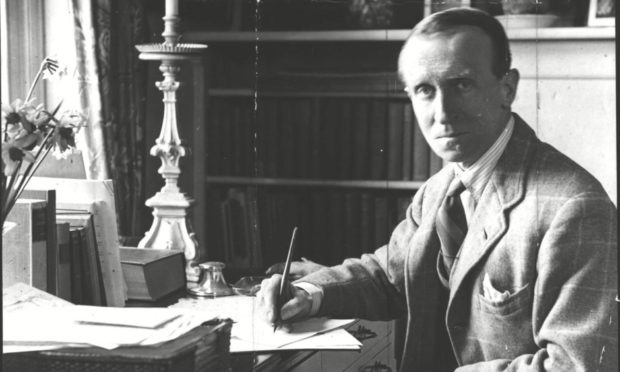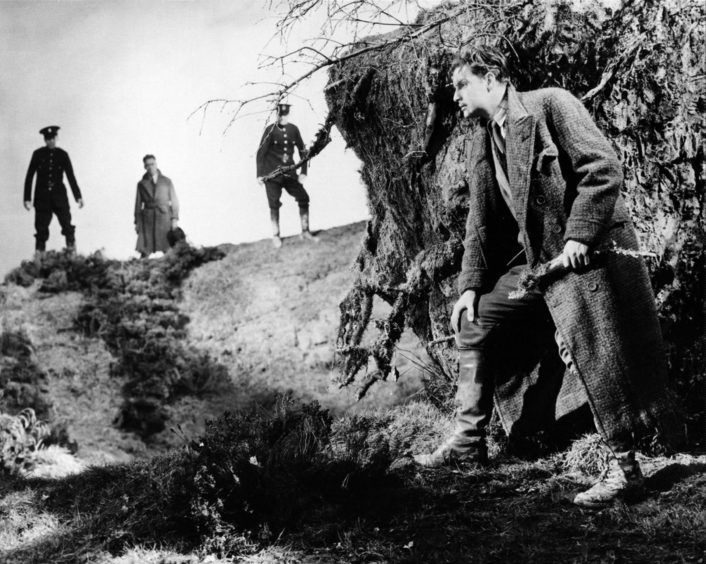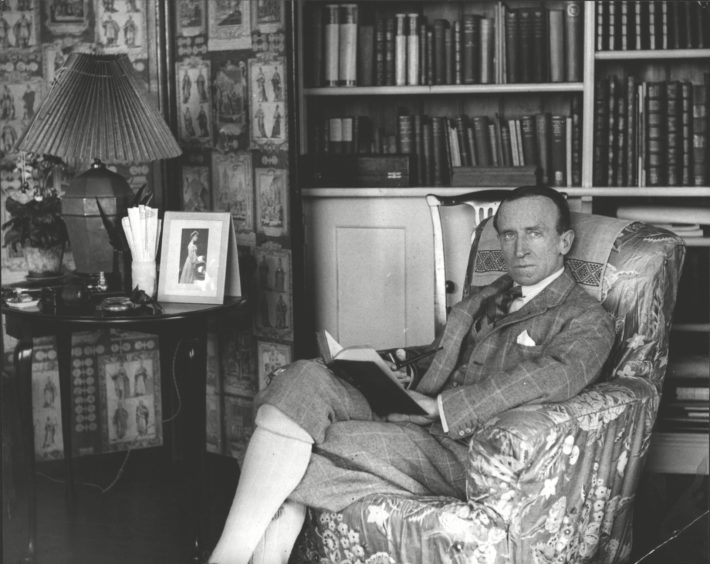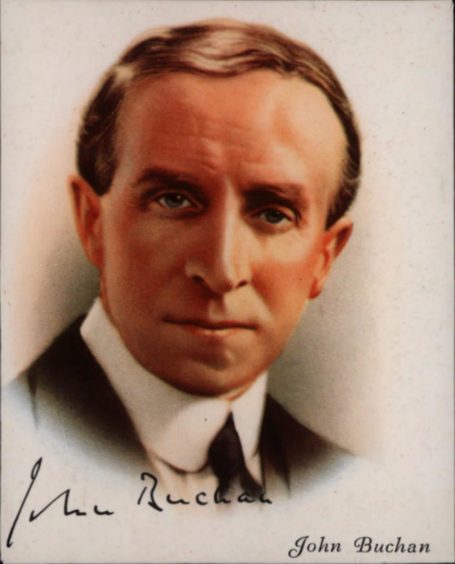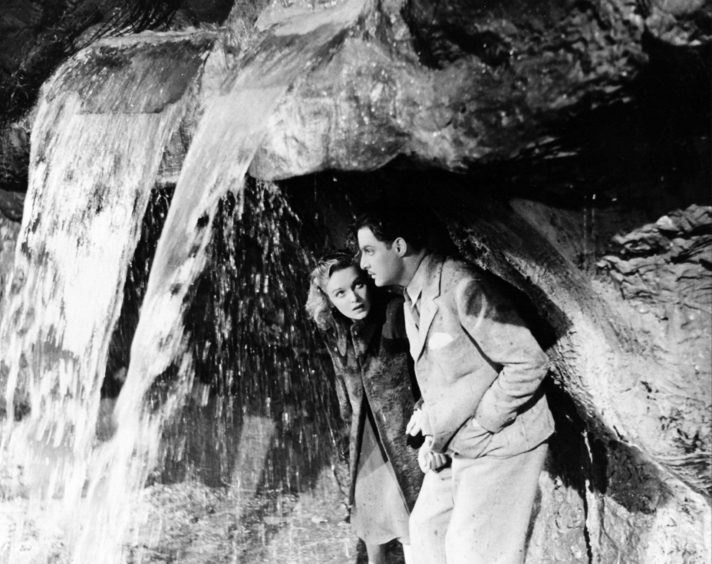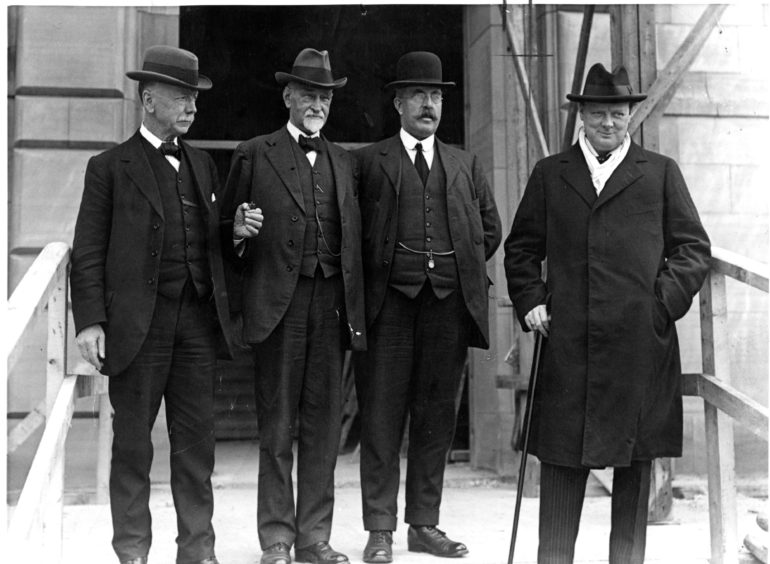Thirty-Nine Steps writer John Buchan led an extraordinary life which was stranger than fiction.
Buchan was born on August 26 1875 at 20 York Place in Perth, which at the time was the manse of the Knox Free Church (South Street) where his father was minister.
The author of more than 100 books and 1,000 articles, Buchan was also a scholar, antiquarian, colonial administrator, publisher, war correspondent, director of wartime propaganda, a Unionist MP, and, at the time of his death, the governor-general of Canada.
But it is for the creation of the patriotic and noble Richard Hannay in The Thirty-Nine Steps for which he is most remembered.
The forerunner to James Bond, Hannay must prove his innocence when charged with murder as he is pursued by police and foreign spies the length of Britain.
Buchan called this style his “shocker”.
The Thirty Nine-Steps first appeared as a serial in Blackwood’s Magazine in August and September 1915 before being published in book form that year by William Blackwood and Sons, Edinburgh.
But it was being granted the Freedom of Perth in 1933 at the City Hall which filled him with just as much pride as anything he achieved in his literary life.
Buchan said there was nothing “more gratifying than the kindly approval of his own people”.
The ceremony made front page headlines when he was conferred the Freedom of Perth alongside insurance company director Francis Norie-Miller
“There is nothing which a man can attain in this uncertain world more gratifying than the kindly approval of his own people,” said Buchan.
“You have given one reason, which, of course, is the chief one, and which I am glad to think is strictly true.
“I am one of yourselves. It is the infant of more than half a century ago you are honouring today.
“It is true that my residence here was brief, and that after six months, I left Perth for the windy shores of Fife.
“My notion of Perth was drawn wholly from Sir Walter Scott, and it seemed to me a magical place, which must confer a unique distinction upon its natives.
“The records of Perth go very far back, for its situation between the sea and the hills, one of the most beautiful I think, in the world, make it inevitable that it should be a place of importance.
“It played a resounding part in Scottish history, and it was the theatre of many famous episodes.”
Buchan said he would take Perth “as a keynote in all the story of Scotland”.
“As a city you have a story of which you may well be proud and I want see the spirit of that story of yours a living thing in Scotland today,” he said.
“It is a spirit of self-conscious and idiomatic pride which is determined to keep our national individuality intact and refuses to allow the steamroller of the modern world to flatten out our ancient landmark.
“But it is also the spirit of unity and comprehension.
“It does not attempt to whittle down our rich tradition or to narrow Scotland to one class or one Kirk or one party, or one habit or thought.
“It realises that the strength of our people, of all peoples, lies in the union of stalwart opposition.”
The Thirty-Nine Steps was the first of five novels featuring Hannay who had a miraculous knack for getting himself out of sticky situations.
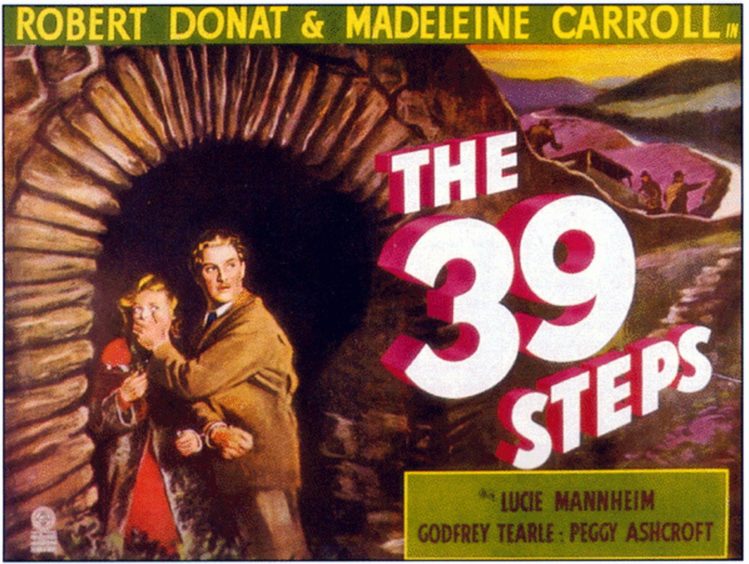
Alfred Hitchcock’s original movie version in 1935 captured the public’s imagination and elevated the story to classic status.
Hitchcock took many liberties with the book including the setting of the Forth Rail Bridge for Hannay’s daring escape from a train on to the girders.
At the premiere in 1935, Hitchcock came up to Buchan and said to him at the interval: ”Are you enjoying it my Lord?
Buchan replied: “Fine so far, but do tell me how it ends.”
Buchan told Hitchcock afterwards that the film was much better than the book.
It is regarded as a classic and proved the inspiration for on-the-run movies such as The Fugitive and North By Northwest.
The life and times of a master of the quill
Buchan was born in Perth in 1875 and brought up in Kirkcaldy where he went to schools first in Pathhead, then finally to Kirkcaldy High, walking three miles each way every day.
It was a happy childhood but Buchan’s father’s profession as a Free Kirk minister then led the family from Kirkcaldy to Glasgow where he lived from the age of 13 until he was 20.
A big fan of Sir Walter Scott and Robert Burns, Buchan attended Hutchesons Grammar and then went on to the University of Glasgow where he successfully tried for a scholarship at Oxford and never lived north of the border again.
But all this time he was writing – reviews, articles and novels.
After graduating, Buchan studied law for his bar exams while continuing to write books and work as a journalist.
At the age of 26 he went to South Africa to assist Lord Milner, the High Commissioner for South Africa, and spent two years there as the country recovered from the Boer War.
In 1903 he returned to the UK, working as a barrister and in 1906 he worked for the publishing company Thomas Nelson’s and the following year he married Susan Charlotte Grosvenor, a cousin of the Duke of Westminster.
Buchan wrote The Thirty-Nine Steps in 1914 which was published in 1915, which was the same year he was war correspondent for The Times where he covered the second battle of Ypres.
The following year he joined the staff of Sir Douglas Haig as an intelligence officer and was present at the Battle of the Somme.
Buchan was recalled to fill the post of the government’s director of wartime propaganda under Lord Beaverbrook in 1917.
He wrote a 24-volume report of the First World War and later he was elected the MP for the Scottish Universities from 1927 to 1935.
He was sworn in as Canada’s governor-general in 1935.
In 1940, aged 64, he slipped and fell in his bath, suffered a haemorrhage and died.
There was a State funeral in Ottowa.
He was cremated and his ashes were sent home secretly, since it was during the war, on a destroyer.
He was buried in Oxfordshire.
He had just signed contracts for five books prior to his death and he was going to leave Canada that autumn and return to Oxfordshire to write.
Other Burgesses and Freemen of the City of Perth
Duke and Duchess of York, Albert George and Elizabeth Marguerite – August 10 1935
Barrister Sir William MacKenzie, Lord Amulree – March 18 1938
Distiller Arthur Kinmond Bell of Kincarrathie – March 18 1938
The Black Watch (Royal Highland Regiment) – July 19 1947
Field Marshall the Right Honourable Earl Wavell – July 19 1947
Former Prime Minister Sir Winston Churchill – May 28 1948
Former Prime Minister Anthony Eden – May 12 1956
Sir Stanley Norie-Miller – September 14 1961
Surgeon Dr William Farquharson – July 24 1970
Sir Neil Cameron, RAF Marshall – August 26 1978
Former Lord Provost David K Thomson – October 30 1982
The Royal British Legion Scotland – May 8 2004
51st Highland, 7th Battalion, the Royal Regiment of Scotland (7 Scots) – May 8 2010
HRH Prince Philip, the Duke of Edinburgh – July 6 2012
